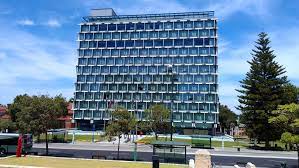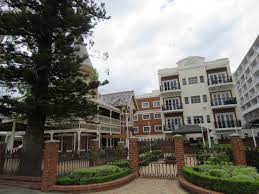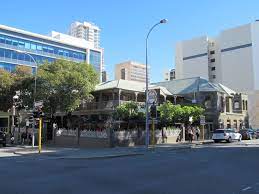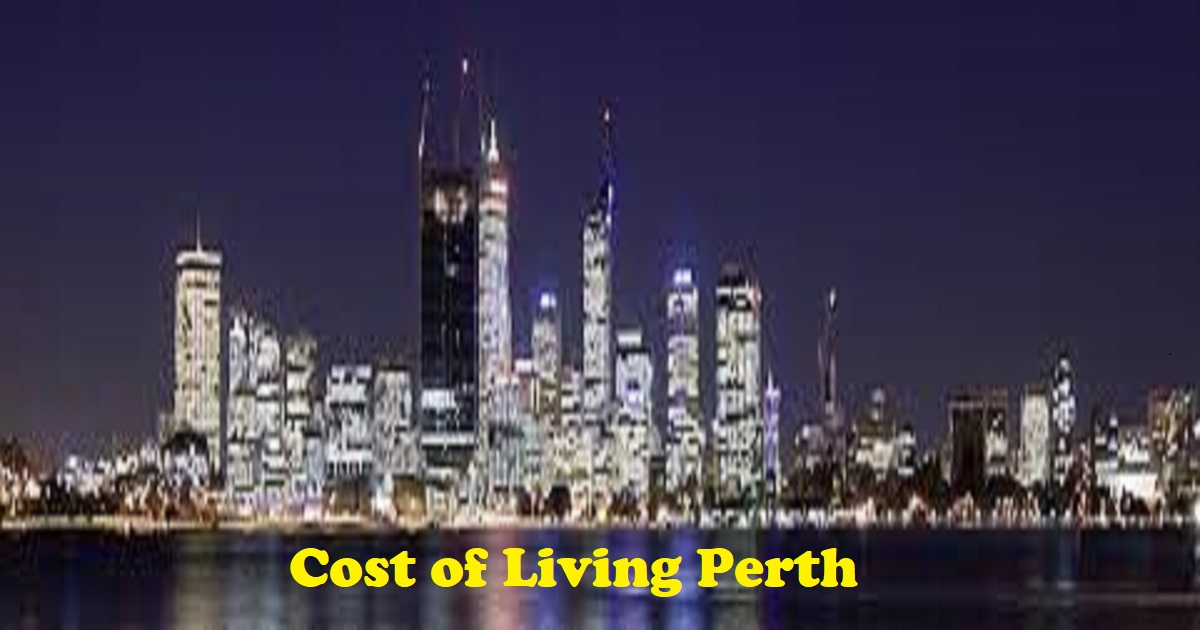About Cost Of Living in Perth
Perth is Australia’s largest city and the capital of the state of WA. Greater Perth will accommodate 2.1 million people by population statistics of 2022, approximately 80% of the state’s population. It will be the fourth most populous metropolitan in Australia and Oceania. Perth is located in Western Australia, 2,200 km northwest of Sydney.
The city has a population of around 2 million people and covers a metropolitan area of about 6,418 km2 square kilometers (2,478 sq mi). The Swan River Colony’s capital, Perth, was established in 1829. Nevertheless, it was designated as the state capital of Western Australia in 1911. It is Oceania’s fifth-largest urban region and Australia’s second-largest metropolitan area after Sydney.
Perth’s economy is dominated by government, education, health care, tourism, mining, manufacturing, retail trade, banking, insurance, real estate, professional services, public administration, transport, and telecommunications.
Perth, which is placed 1884th out of 9294 on our worldwide list and 12th out of 64 in Australia, has an average cost of living that is in the top 20 percent of all the most expensive cities in the world.
Above is a brief introduction to this vibrant city. This article will cover information on the topics like cost of living, rentals of different sized apartments, transportation utility costs, and lifestyle for any tourist or emigrant migrating from any other city of Australia to Perth.
Lifestyle In Perth

Perth offers various entertainment venues ranging from live music to comedy shows. Whether you enjoy listening to live bands or watching stand-up comedians, there’s something for everyone. Some of the favorite spots include The Astor Theater, The Tivoli Theater, The Palais Theater, The Playhouse Theater and Perth Cultural Center. Perth has a large number of yearly cultural events.
Soccer, basketball, cricket, and rugby union games are also played at a number of Perth’s indoor and outdoor sports venues and stadiums. There is plenty to do in Perth if you love shopping. There is always something intriguing to uncover, from chic stores to specialized enterprises.
For unusual treasures, go to Westfield Carousel, Midland Central Market, and Myer Emporium. Perth’s economy depends heavily on tourism, which brings in about 2.8 million domestic and 0.7 million foreign tourists annually.
Perth has a hot-summer and tropical climate with winters that are comparatively calm and moist, moderate winter-based rainfall that is extremely seasonal, and summers that are typically hot, sunny, and dry.
The pro factors like low cost of living and housing, low tax rates, low crime in rural areas, renowned universities, and excellent sports environment make it a great, attractive, and vibrant city for ex-pats and its citizens. It’s a fantastic city with decent health care, education, leisure, and lifestyle options.
Education Opportunities in Perth
Perth is ranked among the top cities in Australia in terms of literacy, meaning residents who have completed their high school education. Approximately 56% of people in Perth have attended educational institutes, which is lower than the national average. The state’s average graduation rate is around 83%, and its ACT composite score is around 24 out of 26 responses, which is lower than the national average.
Regarding educational activities, this city has several renowned government and private schools, colleges and universities existing. The top 4 leading schools in Perth are Perth Modern School, St Hilda’s Anglican School for Girls, Christ Church Grammar School, and Penrhos College. The four government universities are the University of Western Australia, Curtin University, Murdoch University, and Edith Cowan University.
Additionally, public education is free for elementary and secondary students (i.e., excluding tuition fees). You will be required to cover certain expenditures including subject fees and levies, device charges, camps, excursions, etc. Depending on the school’s economic strategy, private school fees will vary; generally speaking, the typical yearly cost of private school tuition in Western Australia starts at roughly $2,000 per year.
Cost of Apartments for rent in Perth

The overall cost of living in Perth, AU, is in the top 20% of all the cities in Australia. According to various reports, the average rent in Indiana is around AU$1,800 per month. The price of an apartment is determined by various characteristics, including the location, the size of the property, and the facilities provided by the landlord.
If you are looking to buy a home in Perth, you need to consider where you want to live, what area suits you best, how much money you have to spend, and whether you would like to own or rent.
The cost of purchasing a home will be impacted by this choice. Due to recent inflation rise worldwide, the average apartment price in Perth has increased by 4% over the past year and is currently sitting at AU$5,800 per sq. meter.
Renting an apartment in Perth may not be a cost-effective way to save money while enjoying many of the state’s natural wonders. Perth apartment rent varies from city to city and may cost anything from AU$1400 to AU$2600 per month.
One-bedroom apartments in larger cities may be more expensive than smaller units in the suburbs. However, you can also find one-bedroom apartments starting as low as AU$1400 per month. On the other hand, two-bedroom apartments may be more expensive in the suburbs because they often have more excellent finishes and facilities.
To help you find suitable options, a summary of approximate apartment sizes and their rents is given below, which are:
- The average rent for a one-bedroom apartment in Perth (in the city center) – is AU$1,720
- The average rent for a one-bedroom apartment in Perth (outside the city center)- is AU$1,330
- The average rent for a three-bedroom apartment in Perth (in the city center) – is $2,905
- The average rent for a three-bedroom apartment in Perth (outside the city center) – is $2,050
Do you want to know more about Commercial Electrical Contractors? read this article: Commercial Electrical Contractors: Everything You Need To Know About Commercial Electrical Contractors
Transportation and Utility costs in Perth
Public transport in Perth is run by a state-governed company. The fare you pay using a SmartRider card is less expensive than buying a cash ticket. The cost of your fare is done by calculating the number of zones you travel between by a standard travel fee.
The cost of utilities and transportation has grown recently as a result of higher inflation rates. As a consequence, it’s critical to maintain track of your spending to make sure you are staying under your spending limit.
Transportation and utility costs are the most significant expense for most households, so it’s crucial to find ways to lower them. Reducing utility costs can be done by using less electricity or cutting down on how much is used. You can also do some things to reduce your water usage, such as using a low-flow showerhead or taking shorter showers.
It is important to note that lower transportation costs can also mean higher utility costs. If your utility provider raises their rates, it will essentially mean more money out of your pocket to pay for the increased cost. Following are the average cost of different utilities and transport fares in Perth;
- Gasoline (1 liter) costs around AU$1.99
- Internet bill (ADSL/DSL) per person costs around A$76.47/month
- The municipality bill (electricity, water, garbage) costs around A$194.82/month
- One way ticket for local transport 1 zone costs around A$4.65 per person
- Monthly regular transport pass costs around A$130 per person.
Cost of Daily Living items in Perth

Perth’s diverse and sustainable economy had a gross regional product (GRP) of A$37.61 billion in 2021. This data represents 11.72% of the Australian state’s GSP. The cost of daily living items can be a huge factor in how much you can afford to pay each month. In Perth, we have great food options at affordable prices. You can buy ingredients like fresh vegetables, meat, fish, and seafood at local supermarkets.
The costs of renting, utilities, and food can challenge low-income families. For example, food stamps can help cover the cost of groceries. And public transportation can help save money on gas by taking you farther from home. Doing so will ensure you have enough money to live comfortably and meet other basic needs.
Here are the average prices of some everyday items:
- A Cappuccino costs around A$4.80.
- A bottle of regular milk (1 ltr) costs around A$2.02
- A bottle of water (1.5 liters) costs around A$2.19
- A loaf of fresh white bread (500 gm) costs A$2.64
- Domestic beer (0.5-liter bottle) costs A$6.20.
- Rice (white) 1kg costs A$2.48.
- Apples (1 kg) cost around A$4.90
- Chicken filets cost A$11.66
- Bananas (1kg) cost around A$3.68
As you can see, Perth’s daily living cost is considerably higher. With some planning and budgeting, you can easily enjoy these vibrant city offers without breaking the bank.
Conclusion
Moving to Perth can be a big commitment. Perth will supply all you need once you arrive and settle down there. It looks so remote and isolated in comparison to the living standards of the state capitals of eastern Australia, yet this could be what you want.
Suppose you are thinking about moving to Perth, Australia. It would help if you do a well-research on all the pros and cons of this city before being shifted here for work. This city has a lot of great arenas, schools, universities, restaurants, and entertainment options.










